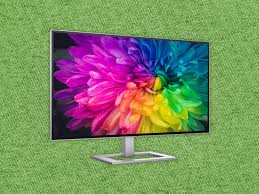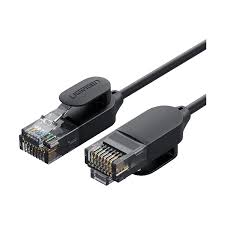A Complete Guide to Monitors: Types, Features, and How to Choose the Best One

A monitor is an essential part of any computer setup, whether you’re using it for work, gaming, content creation, or general entertainment. Over the years, monitors have evolved significantly, offering better resolution, color accuracy, and refresh rates. With so many options available, choosing the right monitor can be a daunting task. This guide will help you understand the different types of monitors, their features, and how to select the best one for your needs.
What is a Monitor?
A monitor is an electronic display screen that receives video signals from a computer or other devices to show images, text, or videos. It acts as the primary visual interface, allowing users to interact with digital content. Monitors vary in size, resolution, refresh rates, and technologies, making them suitable for different purposes.
Types of Monitors
monitor price in bd come in various types, each designed for specific tasks. Below are some of the most common types:
1. LCD (Liquid Crystal Display) Monitors
LCD monitors use liquid crystal technology to produce images. They are widely used due to their affordability, energy efficiency, and lightweight design. However, traditional LCD monitors may not offer the best contrast and color accuracy compared to newer technologies.
2. LED (Light Emitting Diode) Monitors
LED monitors are an advanced version of LCD monitors that use LED backlighting instead of fluorescent lighting. They provide brighter displays, better contrast, and lower power consumption. LED monitors are ideal for general use, office work, and entertainment.
3. OLED (Organic Light Emitting Diode) Monitors
OLED monitors offer superior color accuracy, deeper blacks, and higher contrast ratios. Unlike LCDs, OLED displays do not require a backlight because each pixel emits its own light. This results in more vibrant images and improved viewing angles. OLED monitors are perfect for graphic designers, video editors, and high-end gaming.
4. Gaming Monitors
Gaming monitors are designed specifically for gamers, featuring high refresh rates (120Hz, 144Hz, 240Hz, or higher) and low response times (1ms to 5ms). These features ensure smooth gameplay and reduce motion blur. Many gaming monitors also support technologies like NVIDIA G-Sync and AMD FreeSync, which help eliminate screen tearing and stuttering.
5. Curved Monitors
Curved monitors have a slightly bent screen that enhances the viewing experience by reducing eye strain and improving immersion. They are especially useful for gaming, watching movies, and multitasking on ultrawide screens.
6. Ultrawide Monitors
Ultrawide monitors have an aspect ratio wider than the standard 16:9 format, usually 21:9 or 32:9. They provide extra screen space, making them ideal for video editing, stock trading, and multitasking. Gamers also appreciate the immersive experience offered by ultrawide monitors.
7. Touchscreen Monitors
Touchscreen monitors allow users to interact with their computers directly by touching the screen. These monitors are commonly used in professional design work, educational tools, and retail environments.
Key Features to Consider When Choosing a Monitor
When selecting a monitor, there are several factors to keep in mind:
1. Screen Size
hp monitor price in bangladesh come in different sizes, typically ranging from 19 inches to 34 inches or more. The ideal size depends on your needs:
- 24-27 inches: Ideal for everyday use, office work, and casual gaming.
- 27-32 inches: Suitable for professional work, video editing, and gaming.
- 34 inches and above: Best for ultrawide displays, immersive gaming, and multitasking.
2. Resolution
Resolution determines the clarity and detail of the images displayed on the screen. The most common resolutions include:
- HD (1366×768): Basic resolution for budget monitors.
- Full HD (1920×1080): Standard resolution for most users, offering good image quality.
- Quad HD (2560×1440): Provides sharper images and is great for gaming and productivity.
- 4K UHD (3840×2160): Ultra-high-definition resolution, ideal for video editing, design work, and high-end gaming.
3. Refresh Rate
The refresh rate, measured in Hertz (Hz), determines how many times the screen updates per second. A higher refresh rate results in smoother motion:
- 60Hz: Suitable for everyday use and office work.
- 120Hz-144Hz: Recommended for gaming and fast-paced applications.
- 240Hz+: Best for professional gaming, esports, and high-speed action content.
4. Response Time
Response time, measured in milliseconds (ms), refers to how quickly pixels change colors. A lower response time reduces motion blur and ghosting:
- 1ms – 5ms: Ideal for gaming and fast-moving visuals.
- 8ms – 10ms: Suitable for general computing and multimedia use.
5. Panel Type
The panel technology used in a monitor affects color accuracy, viewing angles, and performance:
- IPS (In-Plane Switching): Offers excellent color accuracy and wide viewing angles. Perfect for professionals and content creators.
- TN (Twisted Nematic): Has the fastest response times but lower color accuracy and viewing angles. Preferred by competitive gamers.
- VA (Vertical Alignment): Provides high contrast ratios and deep blacks. Suitable for watching movies and general use.
6. Connectivity Options
Ensure your monitor has the right ports to connect with your devices:
- HDMI: Commonly used for connecting PCs, gaming consoles, and media players.
- DisplayPort: Preferred for high-performance gaming and professional work.
- USB-C: Provides fast data transfer and power delivery for modern devices.
- VGA/DVI: Older connection types, mainly for legacy systems.
7. Additional Features
Some monitors offer extra features to enhance the user experience:
- HDR (High Dynamic Range): Improves contrast and brightness for better visuals.
- Built-in Speakers: Useful if you don’t have external speakers.
- Adjustable Stand: Allows height and tilt adjustments for ergonomic comfort.
- Blue Light Filter & Flicker-Free Technology: Reduces eye strain during extended use.
How to Choose the Best Monitor for Your Needs
Here’s a quick guide to help you decide:
- For Office & Productivity: A 24-27 inch, Full HD, IPS panel with an ergonomic stand is ideal.
- For Gaming: A 27-inch, 144Hz refresh rate, 1ms response time, and G-Sync/FreeSync is recommended.
- For Content Creation: A 4K UHD, IPS or OLED panel, and high color accuracy is best.
- For Watching Movies: A curved, ultrawide, VA panel with HDR support provides a great experience.
Conclusion
dell monitor price in bangladesh play a crucial role in our daily digital activities, from work and gaming to multimedia and design. Understanding the different types of monitors, their features, and specifications can help you make an informed decision. Whether you need a budget-friendly monitor for office work, a high-performance gaming monitor, or a professional-grade display for creative work, there’s an option available for everyone. Choose wisely and enjoy a better viewing experience!







